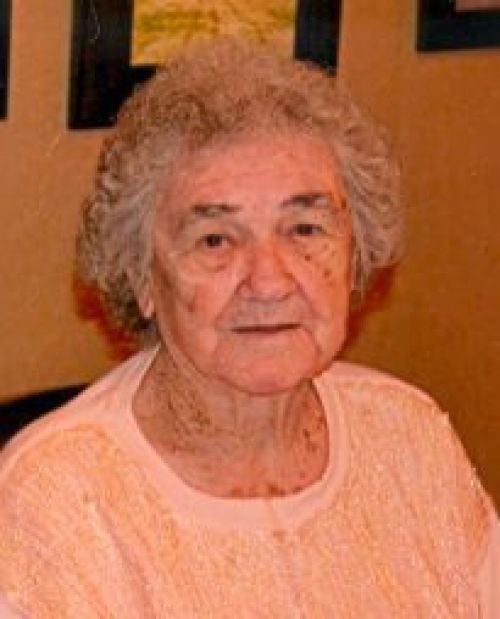
Virginia Rebstock Loupe
December 10, 2013Review: Admin writes 80% of Laf. legislation
December 11, 2013Terrebonne General Medical Center, while aligning its breast-feeding policies and procedures with national standards, aims to achieve the designation of a “baby friendly” hospital by next September.
The tag acknowledges that hospitals have met national guidelines for supporting breastfeeding. Hospitals in the national Best Fed Beginnings program are getting assistance toward that designation, by receiving guidance on creating a cultural renovation of a facility’s approach to support mothers who wish to breastfeed.
Department of Health and Hospitals Secretary Kathy Kliebert toured the hospital’s Women’s Center Thursday to gauge implementation of Best Fed. Louisiana, as of now, has no baby friendly hospitals.
“I’m amazed at the progress they’ve made in such a short period of time,” said Kliebert, whose department has shepherded resources to Terrebonne General and three other Louisiana hospitals participating in the initiative. “Typically, it will take many years to become a baby-friendly hospital. These are major cultural changes. … It is a cultural change not just for the individual and the family members, but also for the physicians, the OBGYNs, the pediatricians.”
Best Fed Beginnings, spearheaded by the National Initiative for Children’s Healthcare Quality (NICHQ) funded by the Centers for Disease Control and Prevention (CDC), helps participating hospitals ready themselves for Baby-Friendly designation. To achieve this certification, hospitals must meet national standards in terms of policies and practices by the end of implementation period. Terrebonne General is one of 89 hospitals in the country participating.
Phyllis Peoples, the hospital’s president and CEO, credited her staff with making a smooth transition to Best Fed. “This is their passion,” Peoples said. “Everybody is going to do what’s right to make sure that baby starts life in a very positive way.”
Breast-feeding benefits children and their mothers. In babies, the potential for obesity, hypertension, diabetes and other long-term illnesses is decreased, and in mothers, weight loss occurs more rapidly, Kliebert said.
Breast milk can increase IQ levels while reducing the chances for Sudden Infant Death Syndrome among all babies and the gastrointestinal disease necrotizing enterocolitis in infants born prematurely, said Dr. Bedford Nieves Cruz, a perinatal and neonatal pediatrician at TGMC.
Nationwide, 76.5 percent of children born no earlier than 2010 have breast-fed at least once, according to the Centers for Disease Control and Prevention. Forty-nine percent were breast-feeding at six months and 16.4 percent were exclusively breast-fed for a half a year, which is the gold standard offered by the American Academy of Pediatrics.
Louisiana’s figures are below the national averages. Roughly 61 percent of children have ever breast-fed, 31.3 percent were breast-feeding at six months and 10.7 percent were exclusively breast-feeding at that point. The first two numbers increased by about 8 percent from 2012, and the last figure jumped by 1 point.
“We’ve got a long way to go,” Kliebert said.
TGMC has seen its statistics climb since it began Best Fed last year, said Julia Bourg, an international board-certified lactation consultant and the hospital’s team leader of Best Fed. The number of moms who breast-feed is up roughly 20 percent to more than 60 percent, total, and of those moms, 80 percent are breast-feeding throughout their duration at the hospital.
Bourg primarily credits two new policies for the increase.
All newborn babies are placed onto their moms for skin-to-skin time directly after birth, whether it is vaginal birth or via a cesarean section. This uninterrupted private time lasts for at least an hour, but it can stretch longer if a mother is waiting on the infant to initiate breast-feeding, Bourg said.
“That’s when our numbers really started to increase,” Bourg said. “The baby would instinctively start to look for the breast. So mothers who really had no inclination to initiate breast-feeding were following their babies’ cues into starting. They were like, ‘OK, well let’s do it then.’ A lot of those moms ended up staying exclusive throughout their hospital stay.”
The technique is also beneficial to children who aren’t breast-fed, as it aids with temperature regulation and stabilizing vital signs while decreasing respiratory stress and fostering a bond among the maternal unit, Bourg said.
To strengthen the relationship and help mothers learn their babies’ cues, Terrebonne General has also replaced the traditional nursery with 24-hour “rooming-in.”
“Moms and babies stay together throughout their hospital stay,” Bourg said. “We encourage moms to keep their babies in the room with them. … It’s just more of a family-centered approach to care rather than a staff-centered approach.”
In an endorsement of those practices, CDC tracks rates of skin-to-skin contact after birth and rooming-in for at least 23 hours a day.
“The early post-partum period is a critical time for establishing and supporting breastfeeding,” reads an introduction to its 2013 breast-feeding report card.
Nurses, doctors and staffers have also been trained on how to counsel expecting and new mothers on breast-feeding. Lactation consultants are also made available to inpatients and outpatients.
East Jefferson General Hospital, Opelousas General Medical Center and Tulane-Lakeside Hospital are additionally participating in Best Fed.
DHH mitigated some of the costs of implementing Best Fed practices, such as out-of-state training sessions, Bourg said. The hospital anticipates an increase in formula costs as they begin paying fair-market value, but overall, the financial cost to the hospital will be “very minimal” when compared to the savings generated by the pending baby-friendly designation, she added.
Separately from Best Fed, Terrebonne General is one of 24 Louisiana hospitals – and the only one locally – to receive Guided Infant Feeding Technique-certification (Gift) through DHH, awarded after 10 breast-feeding criteria are met. The state has 58 delivering facilities.
“We are out there trying to encourage these hospitals to really push to at least move toward that Gift designation, so that they can also be on the road to increasing breast-feeding,” Kliebert said. “Those hospitals that are making those efforts, it will in the long run make a big, big difference in terms of our breast-feeding rates.”
Officials who gathered last week concurred that the promotion of breast-feeding starts at with those who deliver children and care for newborns but extends beyond hospital walls into the community. So far, birthing mothers have received the new practices with aplomb, Bourg said.
“I guess we were worried about the response of the community: Do patients really want this? What we found was yes, they did, they wanted this for a long time,” Bourg said. “It’s been overwhelmingly positive.
“Moms are leaving very proud of the fact breast-feeding was easy for them here.”
Mother Lacey Baudoin and her newborn son Pierce share skin to skin contact right after his birth at Terrebonne General Medical Center. Skin to skin is one of the new initiatives TGMC has implemented as part of the national program Best Fed Beginnings.














